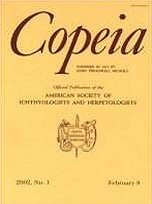Using mtDNA sequence data and a phylogenetic approach, we examined the divergence and evolutionary history of the Toad-Headed Lizards of the Phrynocephalus versicolor species complex, which are currently assigned to three species, P. versicolor, Phrynocephalus frontalis, and Phrynocephalus przewalskii. Both parsimony and likelihood-based analyses resulted in three clades, which do not conform to the current species designation. The three species did not form mutually exclusive monophyletic groups. Instead, the populations from Tengger Desert, Ordos Highland, and further east, which include P. frontalis, P. przewalskii, and several populations of P. versicolor, formed a clade and we recommend recognizing them as a single species under the name P. przewalskii. The populations from the northwestern part of the complex's distribution also formed a monophyletic group, for which we recommend retaining the name P. versicolor. Finally, the southwestern populations share a unique evolutionary history and should be recognized as a new species, Phrynocephalus sp. The resulting phylogeny suggests that the species diversity and distribution patterns of P. przewalskii, P. versicolor, and Phrynocephalus sp. can be better explained by vicariance, rather than the traditional west-to-east dispersal hypothesis.
How to translate text using browser tools
1 May 2004
Cladogenesis and Vicariance Patterns in the Toad-Headed Lizard Phrynocephalus versicolor Species Complex
Yuezhao Wang,
Jinzhong Fu
ACCESS THE FULL ARTICLE





